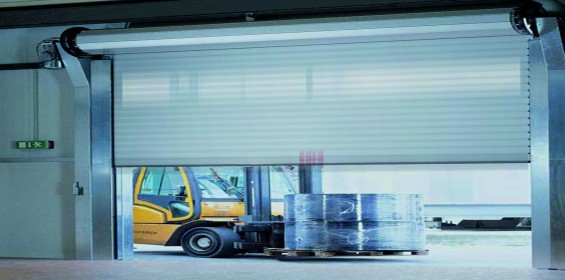Keeping your cool when the heat is on
Published: 28 July, 2020
Many industrial environments are chilled to significantly below the ambient climatic temperature and high-speed shutter doors are the best way to maintain a clear division between inside and out. PWE reports.
There are a number of industries, food manufacturing and specialist logistics amongst them, that generally require low temperatures. Further, they often need even colder spaces or chillers for specific processes, such as the production of ice cream and storage of frozen ready meals.
Refrigerating a chiller to its required low temperature and keeping it within set thermal tolerances can be a significant expense. Furthermore, if the temperature in the interface zones were allowed to rise it could compromise the products or processes, perhaps creating food safety hazards, disrupting low temperature processes or upsetting chilled storage arrangements. Thus, there is a desire to minimise heat losses at doors, loading bays and other interface areas.
With chillers there may be a requirement for frequent entry by personnel or perhaps forklift trucks or even by road vehicles for loading. Installing a high-speed roller shutter door is likely to effectively meet the twin requirements of maintaining temperature levels while allowing fast, easy and efficient access.
Often chillers use a two-door solution, a main door which is opened at the beginning of the working day and remains so until the end of the shift, plus a secondary high-speed door or curtain that is generally kept closed but which opens quickly and easily to allow entry and egress as required. An alternative is a strip curtain, which is easily pushed aside to allow access.
It is notable that chillers are usually fitted internally with white wall cladding to meet hygiene requirements. If the door providers are involved at the design stage of a chiller project, they will most likely advise the use of a steel ‘goalpost’ door frame within the cladding. This will be strong, rigid, long lasting and allow the door to seal at the side and top edges thus maximising retention of cooled air. The steel could be stainless, but more commonly is galvanised as it will be very well protected from corrosive agents by the cladding.
However, as the fixings pass through the cladding, it is recommended that stainless steel or nylon threaded rods are used and that these are capped with plastic or stainless nuts.
For the high-speed door to be an effective barrier against heat transfer it needs to be in the closed position as much as possible. High speed actuation is therefore recommended; although such speeds could cause shock loads leading to excessive wear and tear and a reduced working life.
To open the door, loading bay specialists, sara LBS, recommends one of three options, a pull cord type operating switch positioned conveniently for users such as fork lift truck drivers, or one of two automatic options, radar or induction loop. The best choice depends on the details of each application. A popular option is dual height opening, so that the door is not opened fully unless necessary to allow passage of a tall item. If temperature control is really critical, sara LBS recommends the use of a battery powered back-up so that the door can continue to be operated in the event of a power failure. Loading bays can be designed with high speed doors at both ends which are synchronised so that they are never open simultaneously.
Other options include a curtain tensioning system, a door line photocell, emergency stop safety contact edge, fall-down protection, and integration with a traffic light control system. Loading bays can be designed with high speed doors at both ends.
For further information please visit: www.saralbs.co.uk/







